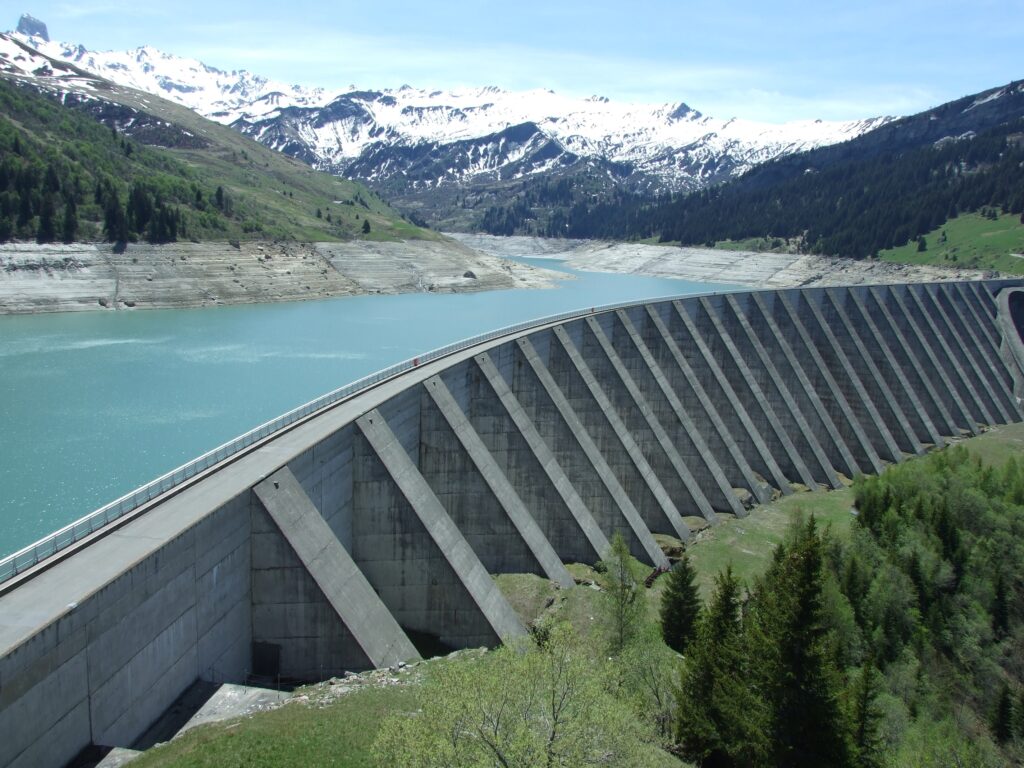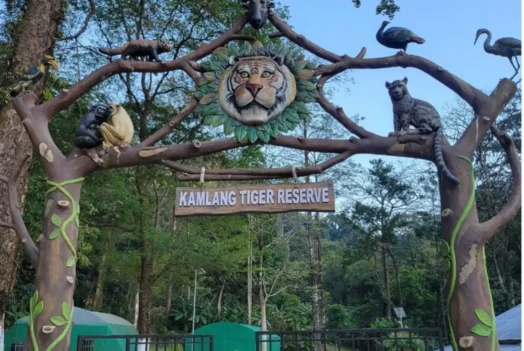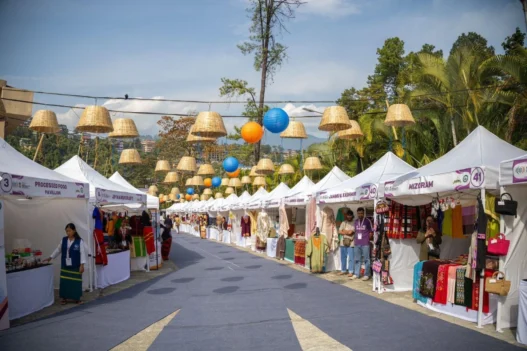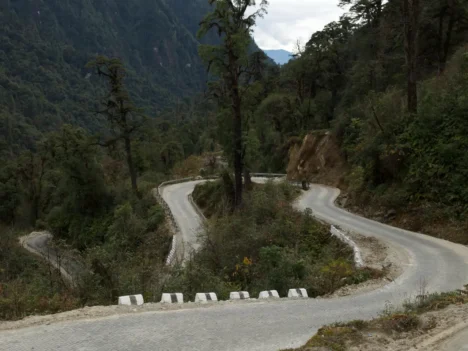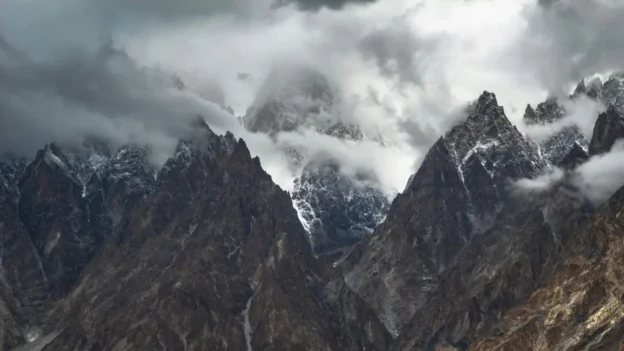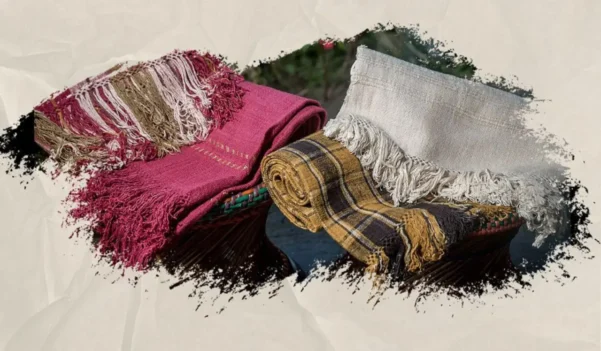With a population of 1.4 billion, India’s demand for energy to fuel its growing economy is rapidly increasing. Since 2000, energy consumption has more than doubled, and as of 2019, India achieved a near-universal access to electricity for households.
However, with a growing industrial base in the country, India further announced at COP26 its commitment to achieving 500 GW of installed electricity capacity from non-fossil fuel (renewable and nuclear) sources by 2030 to meet the current and future energy demands. India’s renewable capacity currently stands at 168.96 GW, including 51.79 GW, contributed by hydropower.
As India is emerging as one of the world leaders in energy transition, its focus on renewable energy has been evident. The Ministry of Power is already working on upgrading and adding the transmission capacity for executing 500 GW of electricity from renewable sources.
Arunachal Pradesh: House of Hydropower
India’s Hydro Power Policy 2008 identified a potential hydropower capacity of 148,701 megawatts, with 34% (50,328 MW) located in Arunachal Pradesh. By October 2021, 1,115 MW of this capacity was in operation in Arunachal Pradesh, with other hydropower projects currently under construction. These include the 3097 MW Etalin Hydro Electric Project in the Dibang Valley district, the 600 MW Kameng Hydroelectric Project in the West Kameng district of Arunachal Pradesh and the 2000 MW Subansiri Lower Hydro Electric Project (SLHEP) in Arunachal Pradesh.
Patel Engineering, the company that won the order for Subansiri Hydro Electric Project, claimed in a statement that SLHEP will be India’s single largest hydropower generation project. The SLHEP project is located in the village of Kolaptukar in Kamle (formerly Lower Subansiri) district of Arunachal Pradesh, 2.3 km upstream of Gerukamukh village in Dhemaji district of Assam on the border of Arunachal Pradesh and Assam. The Subansiri Lower Hydro Electric Project (SLHEP) dam is a concrete gravity dam that impounds the Subansiri River at a height of 116m (381 ft). It is a run-of-river project by NHPC Limited estimated to cost about Rs 20,000 crore in 2020, from its initial cost of Rs 6,285 crore when the project was first sanctioned in December 2012. The project will use eight turbines, each with a capacity of 250 MW, and generate 7,421 GWh of energy annually. About 90% of the project area is situated within the territory of Arunachal Pradesh, and the remaining 10% falls under Assam.
Impediments to the project
The construction of this ambitious project was stalled from December 2011 to October 14, 2019, due to anti-dam protests by locals, Project-Affected Families (PAF), All Assam Students’ Union (AASU), Asom Jatiyatabadi Yuba Chatra Parishad (AJYCP) and Krishak Mukti Sangram Samiti, a peasant organisation based in Assam formed by the RTI (Right to Information) activist Akhil Gogoi, fearing safety and downstream impacts.
The project has also been a point of contention among the environmentalists who argue that the SLHEP in the Himalayas falls under a tectonically active zone making it vulnerable to natural calamities and disasters. However, after the clearance of the Subansiri Lower Project by NGT on July 31 2019, the main works of the dam resumed on October 15 2019. The clearance came after a long hard battle of pleas and litigations between various expert committees, activists and organisations. Finally, in June 2022, Union Power Minister Raj Kumar Singh announced that the Subansiri project would be commissioned in early 2023. The statement was backed by NHPC Chief Executive Director YK Subhe, who assured the people that the project would start generating power from January 2023.
Fair apprehensions
However, several contingencies, following numerous natural disasters, dissent and apprehension among the people regarding the hydropower project, have generated uncertainty over the much-hyped mega-power project.
The most recent landslide that hit the Subansiri lower dam on April 3, due to pre-monsoon rain and subsequent other natural disasters that have occurred in the past, has severely hindered the project and the people involved. Similarly, other hostile incidents like the turbulent Subansiri river triggering a massive landslide in October last year, the collapse of the guard wall in September last year due to rising water levels, and the collapse of an under-construction tunnel of the NHPC’s SLHEP in June last year that killed a worker and left another seriously injured, have also become an agonising dispute for the people affected by the project, which further led to halting the operations.
Ostensibly, the project has been tainted with numerous other apprehensions since its commencement. A matter of great concern is that since its planning stage, the dam’s seismic design parameter was never constructed solid enough to withstand earthquakes above 8.5 magnitudes. The collapse of the guard wall and frequent floods have always caused great angst among the people living in the downstream areas about their security and safety concerns.
Consequences and Considerations
Ecologist and a former scientist at ICIMOD, Dhrupad Choudhury, reiterated similar concerns about the Himalayan regions’ fragility. He said, “The Himalayas are capricious and given their location, earthquakes and prediction of their intensity cannot be ascertained. With high slopes, incessant deforestation and removal of vegetation upstream and in the vicinity of the dams, heavy rainfall can cause erosion that could be detrimental to the population downstream. Therefore, we must question how rigorous the EIA (Environmental Impact Assessment) Report is.
The SLHEP’s EIA report furthermore stands amiss and biased. The report was based on data gathered from within a mere 10-kilometre radius of the project site. It further took no notice of the project’s impacts on the downstream areas like Dhemaji and Lakhimpur, about 40 kilometres from the site. The report only covers the sources of air pollution from mining, vehicular traffic and domestic fuel burning falling in the region, not extending beyond, and it completely overlooked the project’s greenhouse emissions assessment.
Hereafter, several studies were commissioned in 2011, 2015 and 2017. In 2011, the Planning Commission constituted a two-member expert committee (EC). In the same year, a Joint Steering Committee formed by NHPC was created to “suggest feasible and practicable remedial measures in the downstream areas”. However, the Committee’s 44-page report submitted in July 2012 and its recommendations were criticised as “rather ambivalent”. The EC further echoed the concerns of the activists from Assam about the project’s downstream effects.
Dr Choudhury suggests that long-term projects should get Independent EIAs and technical reassessments done regularly. It is in the interest of the NHPC (National Hydroelectric Power Corporation) to follow through with such assessments. This would also increases the projects’ credibility and better assure the people affected. Reassessing the structures is paramount to avoid further problems in the future.
By this means, the effects downstream cannot be negated either. There are two aspects to the dam’s impact on people who live downstream. Dams disrupt a river’s natural flow, be it in increasing or decreasing capacities. A committee set up to reflect on the effects argued that the big dam dries up the river downstream as the dam is not operational throughout the day but only during peak hours in the evening when the demand is high. It blocks the river’s natural flow for the rest of the day. The other aspect highlighted by Dr Choudhury is the stakeholders in Assam fearing the inundation of water and floods.
He points out an important facet, asking, “What are the mechanisms put in place for early warnings of water release? The villages shouldn’t be caught unaware.”
He suggested that Flood Early warning systems (FEWS) be installed that are enabled by wireless technology, such as those installed along the Jiadhal and Singara Rivers in Assam by a team of experts from ICIMOD (International Centre for Integrated Mountain Development, Kathmandu, Nepal).
In 2015, the Ministry of Power appointed an 8-member Project Oversight Committee to “examine various aspects of the project”, comprising four members from North-East states and four others from the Centre. However, it was ascertained that the two factions had submitted reports contradicting each other. The Central group gave the green light to the project, whereas the Northeast group members held onto the earlier prognosis by the activists. With failed resolutions, the National Green Tribunal ordered the Ministry of Environment, Forest and Climate Change for the constitution of another committee with three expert members from seismology, geology and hydrology to “examine the entire matter and reports of various committees constituted” in 2017. The Committee submitted the report in favour of the project, and after nearly eight years, the project’s construction resumed.
However, the apprehension over the project did not just disappear with it. When litigations proved counterproductive to the activists, they shifted their focus to the people’s movement. To a certain extent, the people’s movement has kept afloat the key concerns of the dam’s development relevant.
Apart from the structural problems, the recent disasters have deepened the quandary over the dam. With not just negative impacts on humans, questions on the effects of the dam on biodiversity have also come up.
Dr Choudhury says that cold water rivers sustain the richest diversities. In such environments, some water species migrate upstream for egg-laying. If the river’s natural flow is disrupted, ensuring the survivability of the species becomes a significant concern. Many species are endangered, and certain among them are also endemic to Arunachal Pradesh.
He adds, “Finally if there is a mechanism where the project’s stakeholders regularly interact with the community, it will benefit both parties. A forum can be created where the communities can express their concern, dialogue with the stakeholders and decide on resolutions that fit their needs. It is suggestive that this be done in conjunction with both state governments (Arunachal Pradesh and Assam), NHPC, and, if possible, with the central government involved as well. In case of an impasse, alternatives to the problem should be discussed. There is a lot at stake here.”
With contentions between opposing parties concerning the Subansiri Hydro Power Project and its development, the outcry of the ones immediately affected is far from apparent and while it is a comforting thought that India as a country is progressing towards being energy-efficient, nonetheless, the road to progress seems to be a costly one; fraught with precarity and uncertainties. Often times, this progress ends up negating the negative impacts it has on the very people it is built to serve.

